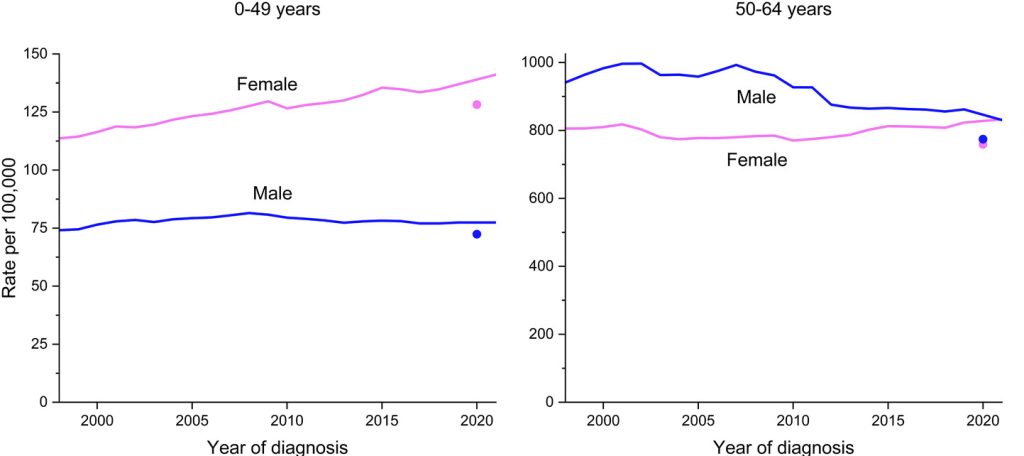While cancer mortality has fallen by more than a third since 1991, the incidence rate among women, particularly young women, has increased and is now higher than in men, the American Cancer Society (ACS) said Thursday.
The 34% decline in the overall death rate between 1991 and 2022 resulted in 4.5 million fewer cancer deaths, according to Cancer Statistics, 2025 . But ACS says that positive news is offset by the growth in cancer incidence rates in women across the age spectrum

For women 50-54, the cancer incidence rate has surpassed that of men and among women under 50 is now 82% higher, up from 51% percent 20 years earlier. These numbers include lung cancer, which has a higher incidence rate among women under 65 than men.
“Continued reductions in cancer mortality because of drops in smoking, better treatment, and earlier detection is certainly great news,” said Rebecca Siegel, senior scientific director, surveillance research at the American Cancer Society and lead author of the report. “However, this progress is tempered by rising incidence in young and middle-aged women, who are often the family caregivers, and a shifting cancer burden from men to women, harkening back to the early 1900s when cancer was more common in women.”
The report also notes increasing incidence among women for breast, liver, uterine corpus cancers and melanoma. There have also been higher death rates for men and women from oral and pancreatic cancers.
The ACS called out pancreatic cancer in particular, which is the third leading cause of cancer deaths in the U.S, for both increasing incidence and mortality rates and a survival rate of just 8% for most people diagnosed with pancreatic exocrine tumors.
The rate of diagnoses for colorectal cancer for men and women under 65 and for cervical cancer for women 30-44 has also increased.
“The cancer burden is shifting from older to younger adults and from men to women,” the report notes. “Middle-aged women now have slightly higher cancer risk than their male counterparts, and young women are almost twice as likely to be diagnosed as young men.”
A bright spot in the report is the progress that has been made in childhood cancers among those 14 and younger, although the incidence rate is still rising among adolescents.
“Mortality rates have dropped by 70% in children and by 63% in adolescents since 1970, largely because of improved treatment for leukemia,” ACS notes.

